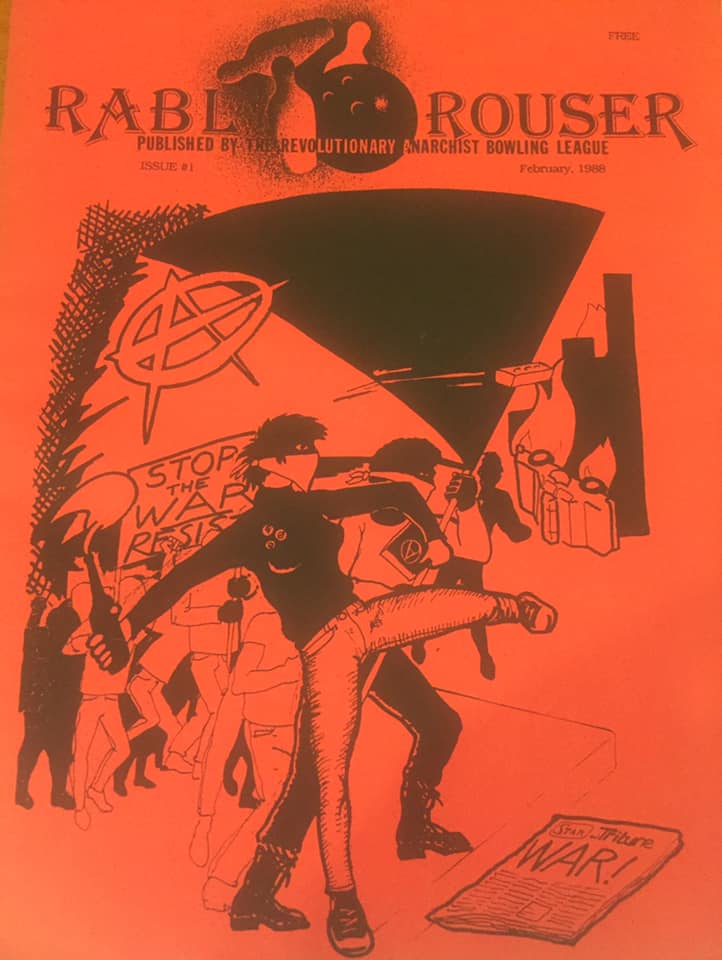In the late 1980s, the Minneapolis-based Revolutionary Anarchist Bowling League (RABL) theorized and practiced what they called “revolutionary anarchism” and helped build an organized anarchist movement across North America. A short ?of #AnarchistHistory
In “Bowling for Beginners: An Anarchist Primer,” RABL offers an initial definition of anarchism: “Anarchy is not chaos. Anarchy is the absence of imposed authority. Anarchy is a society that is built on the principles of respect, cooperation and solidarity…
Anarchy is wimmin controlling their own bodies, workers controlling their own workplaces, youth controlling their own education and the celebration of cultural difference.” (reprinted in Love and Rage, Aug 1990)
RABL gives a short history of anarchism from the 1886 Haymarket Affair to contemporary squatters movements in order to demonstrate that successful movements all share a common thread of people taking power into their own hands and collectively struggling for a new world.
RABL rejected the need for a revolutionary vanguard, arguing that “only the masses, completely involved and in absolute control, can make a real revolution.” In the end, “anarchism is about people empowering themselves to take control and to lead their own lives.”
But since those in power will not give it up without a fight, revolution is necessary. The basic point of unity for RABL was an agreement on the necessity of revolutionary action to reach a classless, stateless society.
RABL brought together the most pro-organization and anti-imperialist anarchists in the Twin Cities–and eventually across the US–to advocate a combination of direct action and revolutionary organization.
True to their name, the Revolutionary Anarchist Bowling League crew began referring to “going bowling” as a code for direct action, which could be anything from nighttime sabotage (gluing locks, spray painting, etc.) to acting as a militant bloc at a street demonstration.
Many anarchists at the time practiced this sort of small-scale militancy, which could be organized in small affinity groups of friends. RABL’s intervention was to pair this individual and small-group direct action with a vision for a broad anarchist federation.
Anarchism could continue to exist forever on the margins of society in small groups, but if anarchists wanted to actually change the world, they needed to get organized and help build militant mass movements.
Despite their roots in a relatively small city, the Revolutionary Anarchist Bowling League played an outsized role in transforming US anarchism and organizing a national movement at the end of the 20th century… End ?https://t.co/uzyTYPJYLP
#FragmentsOfAnAnarchistDissertation
https://emptyhandshistory.com/bowling-for-anarchy-the-revolutionary-anarchist-bowling-league/
A comrade who was in RABL just sent me these photos to add to the post (1/2):




A comrade who was in RABL just sent me these photos to add to the post (2/2):




A couple more


